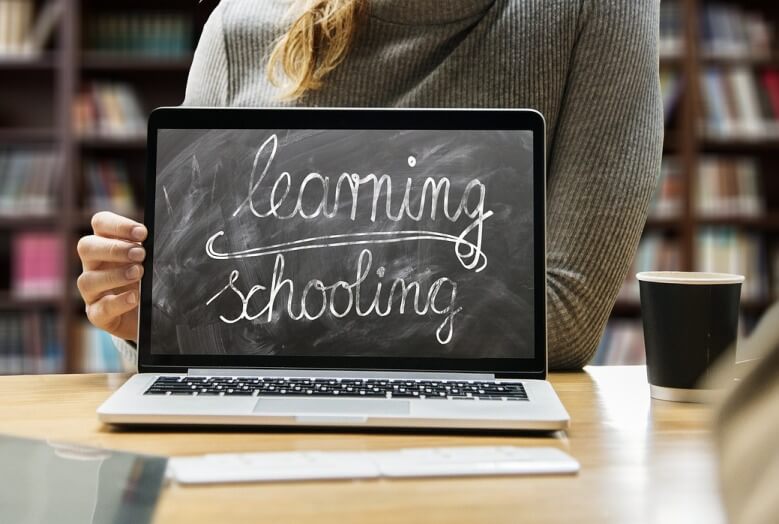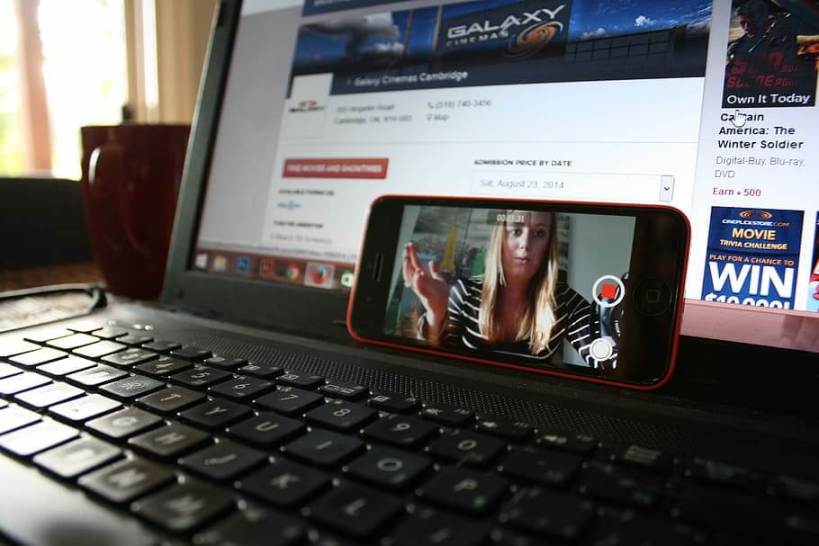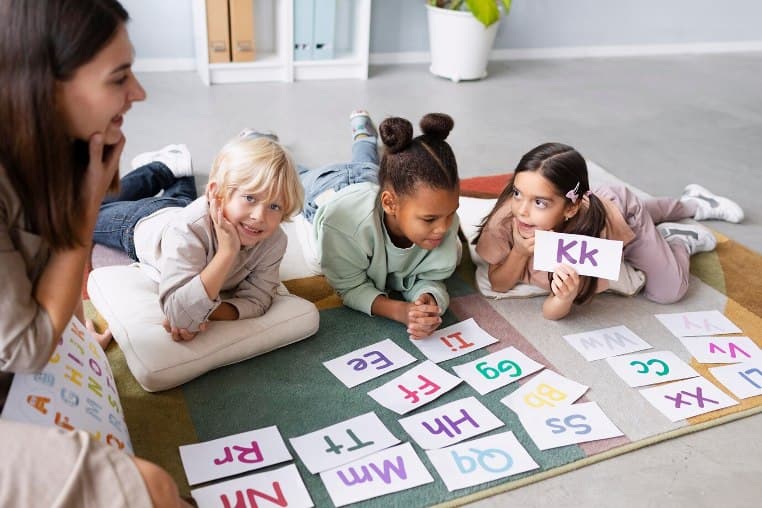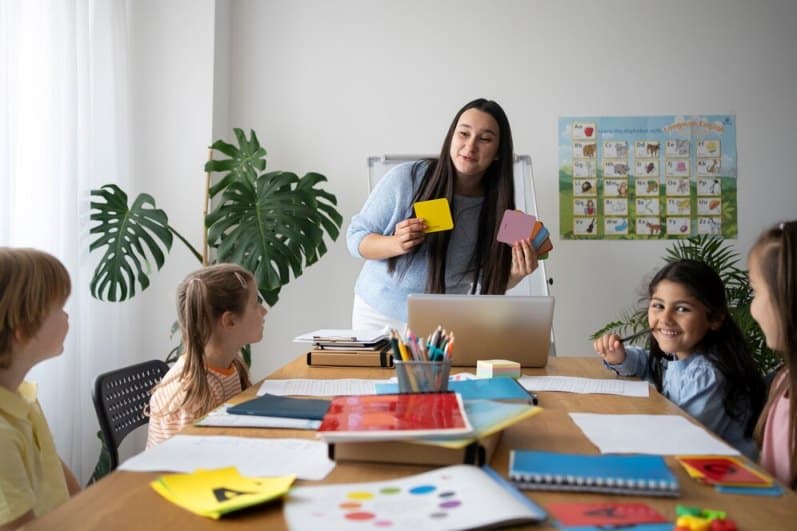Thanks to the massification of the Internet and the improvements in technologies in the world of hosting, a concept has been born that is being talked about more and more: virtual classroom.
The location of a person is no longer an impediment to taking classes or lessons, and in fact there are thousands and thousands of courses that can be taught through the Internet, and one of the platforms to carry that out is precisely virtual classrooms.
If you are interested in the subject of the virtual classroom and want to learn more about it or create your own, then stay here and read on.
What is a virtual classroom?
A virtual classroom, as its name indicates, is a classroom found on the Internet, that is, it is a space on the web which is used by students and teachers with different functions, such as teaching, sharing ideas, presenting projects, among others.
The idea behind a virtual classroom is that it works similarly to how a physical classroom of any educational institution would, except that it is mounted on the Internet.
Through interaction in chat and message systems, as well as through voice and/or video conversations, students and teachers can establish communication for what they need in relation to the course they are following.
Advantages of Virtual Classroom
Virtual classrooms have certain advantages over a traditional classroom, the main ones being the elimination of two important limiters such as location and time.
Twenty years ago it was not possible to take a course without having a physical presence in a certain school, college or university, but now that changed, since many courses are taught over the Internet.
The other great barrier that virtual classrooms have knocked down is that of time, since now the person who decides to take a course does not need to adapt their routine or their daily life to established schedules, but directly the student is the one who sets their own schedules and take the courses when he want.
See More: Studying at home is better than studying at school
Many classes that are taught live later are available in video format so that students who did not see it live can also access it.
Another important aspect of virtual classrooms is that many have a huge capacity, so that massive classes can be taught, something that would require enormous physical space if it is a face-to-face classroom. In addition to this, the information and study material can be distributed to all students simultaneously and quickly.
Disadvantages of Virtual Classroom
But of course, not everything is rosy, since virtual classrooms can still present certain disadvantages in various situations, such as if the person has little or no computer knowledge, it will take more time to adapt to the operation of the classroom and to interact with it, which can negatively impact performance.
In other words, in order to use a virtual classroom we need at least basic computer skills.
On the other hand, in a virtual classroom it can become more difficult to motivate students, since they do not have a physical presence. On its own, even in face-to-face classrooms, it can sometimes become difficult to motivate and positively incentivize a student, and this of course is a much more challenging task in virtual classrooms.
Another important point is that virtual classrooms can become inaccessible in various situations where technical failures occur, either if there are problems on the server, or if the connection of a student has failures, or the same even with the devices that are use to connect to the virtual classroom.
Finally, the lack of qualified teachers can be a serious problem. Having knowledge is not enough to teach, since it is equally important to know how to transmit this knowledge to students so that they can assimilate it without too much complications.
A teacher who knows a lot about a certain subject but does not know how to transmit his knowledge correctly will not be a good teacher. Both the knowledge and the ability to transmit them are important, and unfortunately this last point is something that fails in many virtual classrooms.
How exactly virtual classroom work?
A virtual classroom, as we already said, it has several similarities with a traditional classroom, in the sense that there classes are held and there may be an interaction between students and teachers, although of course, all this occurs very differently from traditional teaching because everything is done through the Internet and using certain tools that we will detail below.
Forums
Forums are places where you can create threads or topics where a user can ask a question or simply ask for the opinion of something else regarding the issue. Within this thread, both students and teachers can enter their answers, and, depending on the topic that is raised, a long conversation can be started in which all involved exchange knowledge and ideas.
The forum is undoubtedly one of the most important tools for students and teachers to communicate properly, since often not all students can attend live classes or live sessions to answer questions.
Chat system
Chat systems are another way for students and teachers to interact, and are generally available when teaching live classes or when sessions are held to eliminate doubts, for example. It is a means of communication that is fast and instantaneous, and where students can quickly ask questions and teachers solve them.
Calendars
The use of calendars is important since it allows students to know important dates and days with respect to the course they are taking, such as, for example, days to answer questions, test and exam dates, homework delivery dates, among others.
The calendar is a very important tool for students and teachers to organize their times in an appropriate way, and thus be able to give their best performance during the course.
Video classes
Video classes are another of the fundamental pillars of a virtual classroom. As we said, many people opt for online courses because they do not have time availability, so they can take the courses when they have enough time. This of course also implies that not everyone will be able to attend the live classes.
For those who cannot attend the live classes, or for those who wish to repeat a lesson, there are the video classes, in fact there are basic classes that are already prerecorded and that are not necessarily given live.
Study material and additional information for virtual classroom
As we well know, education does not end only in the classroom, since it is important to continue studying even outside of it. For this, teachers can provide students with various study materials, such as infographics or electronic books.
You can also include materials of other types, such as links to talks on the subject, informative videos on platforms such as YouTube, among others.
Through a combination of the aforementioned tools, and even integrating others according to the virtual classroom, it is how online courses are carried out. It is the characteristics and functions of a virtual classroom that allow it to function the way it does.
Origin of the virtual classroom
And of course like any idea, virtual classrooms had to be born in the head of someone, or even several people. The virtual classrooms also had their origin, and it is of course very recent, since as we said it was thanks to the massification of the Internet that carrying out this kind of projects became possible.
We must highlight one important thing: virtual classroom and distance education is not the same, in fact distance education has existed for more than 100 years, although it may seem untrue. Distance education was actually born in the 19th century in the United Kingdom and the United States, sending the courses in the form of correspondence. This expanded a few decades later thanks to radio, finally reaching television broadcasts in 1963.
As we said, the distance education is not new, but virtual classrooms are, although their idea has been out there for three decades: according to Michalis Xenos, the idea emerged in 1986, that is, about 15 years before arrival massive internet to homes. It was in 1986 when Starr Roxanne Hiltz edited an article called “The Virtual Classroom: Using Computer-Mediated Communication for University Teaching”.
The first software aimed at virtual classrooms emerged in the late 90s and early 21st century, although some years before there were systems where university students could interact, however they were not considered virtual classrooms as such. Nowadays the most used tools to set up virtual classrooms are Moodle and Blackboard, which between them cover approximately 70% of their market share.
Is the virtual classroom the future of education?
This is a question that can often arise in the field of online education, and the truth is that your answer is very simple: not entirely. What do we mean? Because virtual classrooms will continue to be a means of education in the future but they will not be the only or the main one, that is, they will share the future with traditional classrooms.
And why this? Well, for the same reason that virtual classrooms emerged: time and space. The virtual classrooms arose from the need to give distance courses and to people who did not have much time, or could not move to the place where the course would take place.
These two factors are what condition that the face-to-face classrooms continue to exist: there are people who do have time to take a face-to-face class and can get to the place where it is taught.
In other words, virtual classrooms are one part of the future of education, the other being, of course, traditional education in person. Both teaching models exist and will continue to exist together, that one does not imply that the other will disappear, and also taking into account the advantages and disadvantages of virtual classrooms, it is clear that there are people who do not want to take online courses.
Neither can it be said that one model of education is better than another, because if they are executed correctly, both can be just as good, only that these will target a different audience: whoever has time will be able to take face-to-face classes and whoever will not be able to opt for classes in virtual classrooms.
It should also be mentioned that there are traditional education teachers who also teach online, so not necessary there have to be mutually exclusive models for the teacher.
What do I need to set up a virtual classroom?
In order to create our own virtual classroom, several things are required, the most basic being a hosting service, a domain and educational software that will allow us to create the virtual classroom. Let’s see in detail what each of these elements consists of.
Hosting
Hosting, as known as web hosting, is a service that allows us to upload a website to the Internet. The companies that provide the web hosting service give their clients a space on a server so that they can place a website there, so that the general public can subsequently access the site through the Internet.
All Internet websites, no matter what they are, are hosted on servers. The servers are, explained in a simple way, computers that are oriented to host a website, that is, save the content of a website there and then display it to a user through the user’s web browser.
There are many different hosting companies in the world, and many even provide a specialized service for the implementation of virtual classrooms, that is, a service that is optimized to be used in online distance education.
Hosting is one of the basic and most important requirements to have a virtual classroom, so if we are going to hire one it is important that it be a quality service. It may cost us a little more money than cheap hosting, but having a stable and quality service will give us much more peace of mind when working in our virtual classroom.
Domain
In order for the public to access our virtual classroom, we are going to need a domain. A domain is the name of a website as shown in the browser bar, for example the domain of this website, educationtask.com. The domain for example of Google is google.com, and so there are countless other examples.
As we said, the domain is necessary so that people can access our website by placing the address in the browser bar. If we do not have a domain, then no one will be able to find our website, it would be like asking someone to find a house and not telling them exactly where it is located.
The domain is a service that most hosting companies provide, so in the company that hires your web hosting service you will probably also be able to hire your domain. It is worth mentioning that there are also companies that are dedicated only to the sale of domains, and of course the costs vary from one domain registrant to another, so make sure to check several and then choose the one that seems most suitable to you.
Software
The other basic requirement is essential to be able to set up our virtual classroom is software. If we already have a hosting and domain then we are only going to need the appropriate software. This software will be installed in the hosting that we have hired from the company that provides the web hosting service.
There is a large amount of software to set up virtual classrooms, although if you ask us to recommend one, then the best option would undoubtedly be Moodle.
Moodle is free software and it is the online education platform par excellence, being the most widely used of its kind worldwide. If we know how to use Moodle correctly, we will be able to set up our virtual classrooms and courses easily, although of course, for that it is important to know and study this software to learn how to use it exactly.
Moodle currently has more than 160 million users worldwide and is used on more than 100,000 websites around the globe, being the most widely used software on the web to create virtual classrooms and teach online.
If for some reason you don’t want to use Moodle, of course there are other alternatives out there. Some of the best Moodle alternatives that can be found include BlackBoard, Chamilo, WordPress with LearnDash, among others.
It is worth mentioning that not all of them have the same functions, and they are not all free (LearnDash for example is a licensed plugin), so ideally, you should review several and inform yourself about the characteristics of each one before making a final decision.
Teachers
It may sound silly but another of the essential and obvious requirements to set up a virtual classroom are teachers, that is, people with knowledge about a certain subject and also with the ability to transmit it correctly to students.
Remember that if you are not going to teach the classes on your own then it will be necessary for you to have enough money to invest in teachers, and of course you will need to have adequate contacts, that is, meet people who know about the topics that will be covered in your online courses.
It is extremely important also that the teachers in your virtual classroom not only have knowledge but also know how to transmit it, because if this is not fulfilled then the online education that is being given will not be effective at all and can become a serious problem for your brand or for your online course company.
Conclusion
The concept of distance education has existed for more than 150 years as already explained, however virtual classrooms are much newer, appearing approximately 20 to 25 years ago, achieving great growth at the beginning of the 21st century thanks to the advancement of the technology and computers in most homes on the planet.
Virtual classrooms, as we already know, are spaces where students and teachers interact. These interactions can be of different types, either between student and teacher or between one student and another. In these spaces, students learn and expand their knowledge on various topics, their questions are answered and a great interaction is achieved between the participants. All this has been achieved through certain tools such as discussion forums, chat systems, video classes, etc.
There are those who affirm that the future lies in education is online, but that is not true, since virtual classrooms actually arose out of necessity. The reality is that the traditional classroom and the virtual classroom will continue to coexist in the future simply because each of these models is targeting a different type of audience.
If you are thinking of setting up your own virtual classroom remember that it will be necessary for you to have certain basic things to be able to do it, these being a hosting service, a domain, trained personnel to teach the courses and of course a software that will be used in the creation and assembly of the virtual classroom itself.





